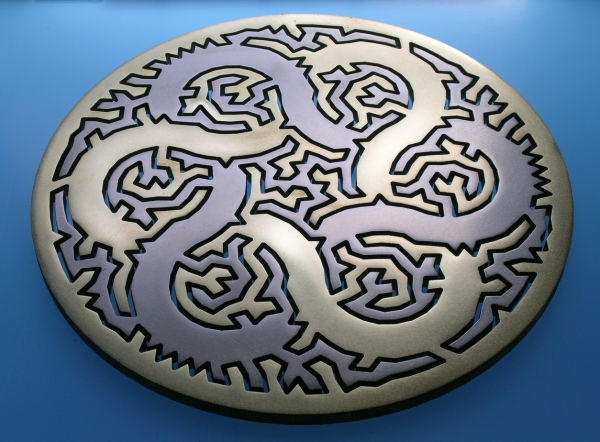Robert Bosch |
"Embrace"
Stainless steel and brass, Diameter = 6 inches, thickness = 0.25 inches, 2009.

"I began by converting a drawing of a two-component link into a symmetric collection of points. By treating the points as the cities of a Traveling Salesman Problem and adding constraints that forced the salesman's tour
to be symmetric, I constructed a symmetric simple-closed curve that divides the plane into two pieces: inside and outside. With a water jet
cutter, I cut along this Jordan curve through quarter-inch thick, six-inch diameter disks of steel and brass. By swapping inside pieces I obtained
two copies of the sculpture. Here, steel is inside and brass is outside."
Robert Bosch, Artist/Professor of Mathematics, Department of Mathematics, Oberlin College
Oberlin, Ohio
All artists are optimizers. All artists try to perform a
task --- creating a piece of artwork --- at the highest level
possible. The main difference between me and other artists
is that I use optimization explicitly. I don't use a pencil,
paintbrush, or any other traditional tool. I do use a computer,
but not in the same way that other digital artists do. Instead,
I use mathematical optimization. Here's how I work: After I get
an idea for a piece, I translate the idea into a mathematical
optimization problem. I then solve the problem, render the
solution, and see if I'm pleased with the result. If I am, I
stop. If not, I revise the mathematical optimization problem,
solve it, render its solution, and examine it. Often, I need
to go through many iterations to end up with a piece that pleases
me. I do this out of a love of mathematical optimization --- the
theory, the algorithms, the numerous applications.